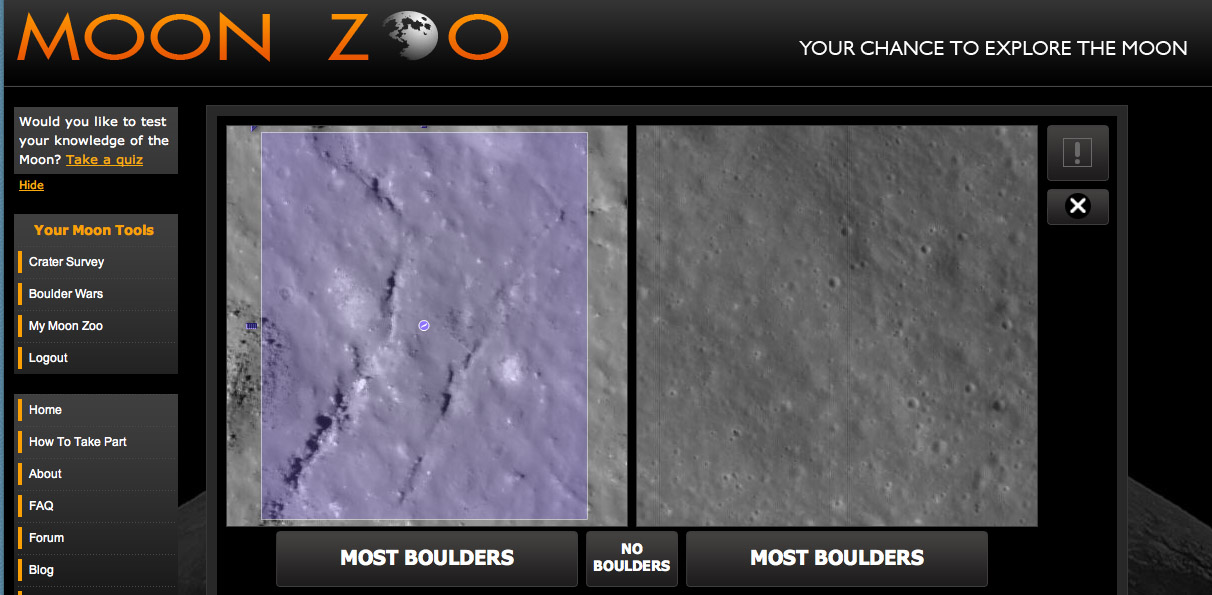Difference between revisions of "May 12, 2010"
| Line 5: | Line 5: | ||
<em>image from [http://www.moonzoo.org/ Moon Zoo]</em><br /> | <em>image from [http://www.moonzoo.org/ Moon Zoo]</em><br /> | ||
<br /> | <br /> | ||
| − | Moon Zoo has appeared. After a tantalizing [ | + | Moon Zoo has appeared. After a tantalizing [[March_16,_2010|pre-release]] in March the full version is now available. Moon Zoo is an educational and entertaining way for normal folks - like you and me - to contribute to characterization of the the lunar surface. The Zoo displays Lunar Reconnaissance Orbiter images to analyze using an interface that is easy to learn; you can start contributing to lunar science after registering and watching a short training video. You have three task. First is to identify craters and measure their diameters as a way to determine ages of units. Second is to identify craters surrounded by boulders to estimate regolith thickness. Third is to point out interesting features, such as bright craters, dark halo craters, weird craters and spacecraft, for later detailed studies. I marked one such feature with a purple rectangle - it seems to be cracks in an impact melt.<br /> |
<br /> | <br /> | ||
<em>[mailto:tychocrater@yahoo.com Chuck Wood]</em><br /> | <em>[mailto:tychocrater@yahoo.com Chuck Wood]</em><br /> | ||
<br /> | <br /> | ||
| + | <p><b>Yesterday's LPOD:</b> [[May 11, 2010|Find the Crater]] </p> | ||
| + | <p><b>Tomorrow's LPOD:</b> [[May 13, 2010|Basinal Surprises]] </p> | ||
<hr /> | <hr /> | ||
| − | + | {{wiki/ArticleFooter}} | |
| − | |||
| − | |||
| − | |||
| − | |||
Revision as of 11:23, 7 February 2015
Real Zoo

image from Moon Zoo
Moon Zoo has appeared. After a tantalizing pre-release in March the full version is now available. Moon Zoo is an educational and entertaining way for normal folks - like you and me - to contribute to characterization of the the lunar surface. The Zoo displays Lunar Reconnaissance Orbiter images to analyze using an interface that is easy to learn; you can start contributing to lunar science after registering and watching a short training video. You have three task. First is to identify craters and measure their diameters as a way to determine ages of units. Second is to identify craters surrounded by boulders to estimate regolith thickness. Third is to point out interesting features, such as bright craters, dark halo craters, weird craters and spacecraft, for later detailed studies. I marked one such feature with a purple rectangle - it seems to be cracks in an impact melt.
Chuck Wood
Yesterday's LPOD: Find the Crater
Tomorrow's LPOD: Basinal Surprises
COMMENTS?
Register, Log in, and join in the comments.



